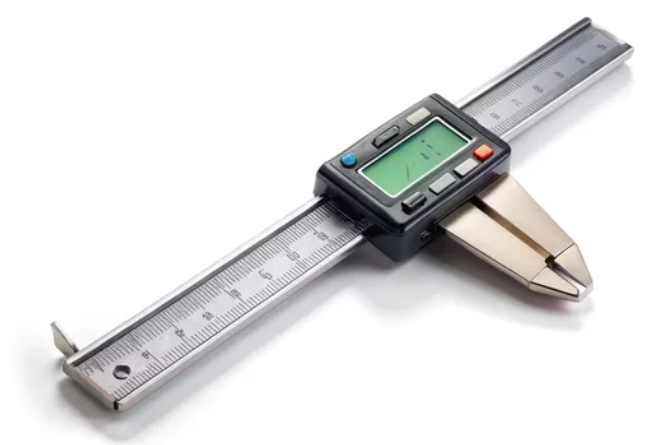In our globally interconnected world, the need to convert between different units of length is increasingly common. Whether you’re traveling abroad, working on international projects, or just trying to make sense of measurements in a foreign system, understanding how to convert units like meters to feet or kilometers to miles is essential. Length unit converters—both online tools and physical charts—make this process easy, saving you time and ensuring accuracy. In this blog post, we will explore the different types of length unit conversions, focusing on meters to feet and kilometers to miles, and discuss how length unit converters simplify the process.
Check out our Types of Unit Converters
Why Convert Length Units?
Length is one of the most commonly measured dimensions, used in fields ranging from construction and engineering to science, travel, and sports. However, different regions and industries use different units of measurement, which can lead to confusion.
In most of the world, the metric system is the standard, with units like meters, kilometers, and centimeters. However, in the United States and a few other countries, the imperial system is still widely used, where feet, miles, and inches are common. To work seamlessly across these measurement systems, it’s necessary to convert from one unit to another, such as:
- Meters to feet (common in height and length measurements)
- Kilometers to miles (used in long-distance travel and road signs)
Length unit converters streamline this conversion process, allowing users to easily move between systems without manual calculations.
Converting Meters to Feet
Meters and feet are both units used to measure length, but they belong to different systems of measurement. The meter is the base unit of length in the metric system, while the foot is used in the imperial system. Understanding how to convert between them is essential for many daily tasks, especially when dealing with international measurements.
Conversion Formula
The basic formula to convert meters to feet is:
1 meter = 3.28084 feet
This means that to convert a length in meters to feet, you simply multiply the number of meters by 3.28084. For example:
5 meters × 3.28084 = 16.4042 feet
Common Uses
- Construction and Architecture: Often, building plans will be drafted using one system of measurement, while construction materials or teams may work in another. Converting meters to feet helps ensure accuracy.
- Sports and Fitness: Track and field distances are measured in meters internationally, but in the U.S., feet and yards are often used.
- Everyday Scenarios: If you are reading a measurement in meters but need to visualize it in feet (perhaps for furniture placement or understanding room dimensions), a quick conversion is handy.
Online Tools
Online length unit converters provide a quick and convenient way to convert meters to feet. Simply enter the value in meters, and the tool will give you the corresponding length in feet within seconds. These calculators often support multiple conversions, so you can go from feet to meters as well.
Types of Length Unit Converters
Length unit converters come in various forms, making conversions convenient regardless of your situation.
1. Online Length Unit Converters
Online converters are arguably the most widely used method for converting length units today. They are available as websites and mobile apps, making them accessible from virtually any device.
- Ease of Use: Most online converters only require the user to enter the length they want to convert and choose the units involved. The conversion happens instantly, and many tools can convert between multiple units in one go (e.g., meters to feet, centimeters to inches, and kilometers to miles).
- Accuracy: Online converters are typically very accurate, updating with the latest conversion factors. For common conversions like meters to feet and kilometers to miles, they often include pre-programmed formulas that users can rely on.
2. Physical Conversion Charts
In certain professions or environments, physical conversion charts are still a useful tool. These charts provide quick reference for converting between various units, without requiring access to a device or internet connection.
- Construction and Engineering: On job sites, conversion charts can often be found printed on tools or in manuals. Workers may need to convert measurements on the spot, and these charts allow for fast lookup.
- Classrooms: Physical charts are often found in classrooms as a learning tool. Students can use them to familiarize themselves with different systems of measurement and practice manual conversions.
3. Built-In Converter Tools (Software)
Modern software programs, such as CAD tools and graphic design programs, often come with built-in length converters.
- Engineering and Architecture Software: Professionals working on international projects often switch between metric and imperial units within their design software. Built-in conversion tools automatically handle this task, ensuring that all measurements are accurate and consistent.
4. Manual Conversion (Calculator)
In some cases, you may not have access to an online tool or chart. In these situations, a basic calculator and understanding of the conversion formulas can help. While manual conversion requires a bit more effort, it remains a reliable method.
Try out our Free Math and English Worksheet Generators
Length unit converters—whether online, physical, or built into professional tools—play a crucial role in simplifying the conversion of measurements between systems. Whether you’re converting meters to feet for a construction project or kilometers to miles for a road trip, these tools ensure accuracy and save time. The ability to easily switch between units makes life more convenient and helps professionals, students, and travelers alike stay confident in their measurements.
